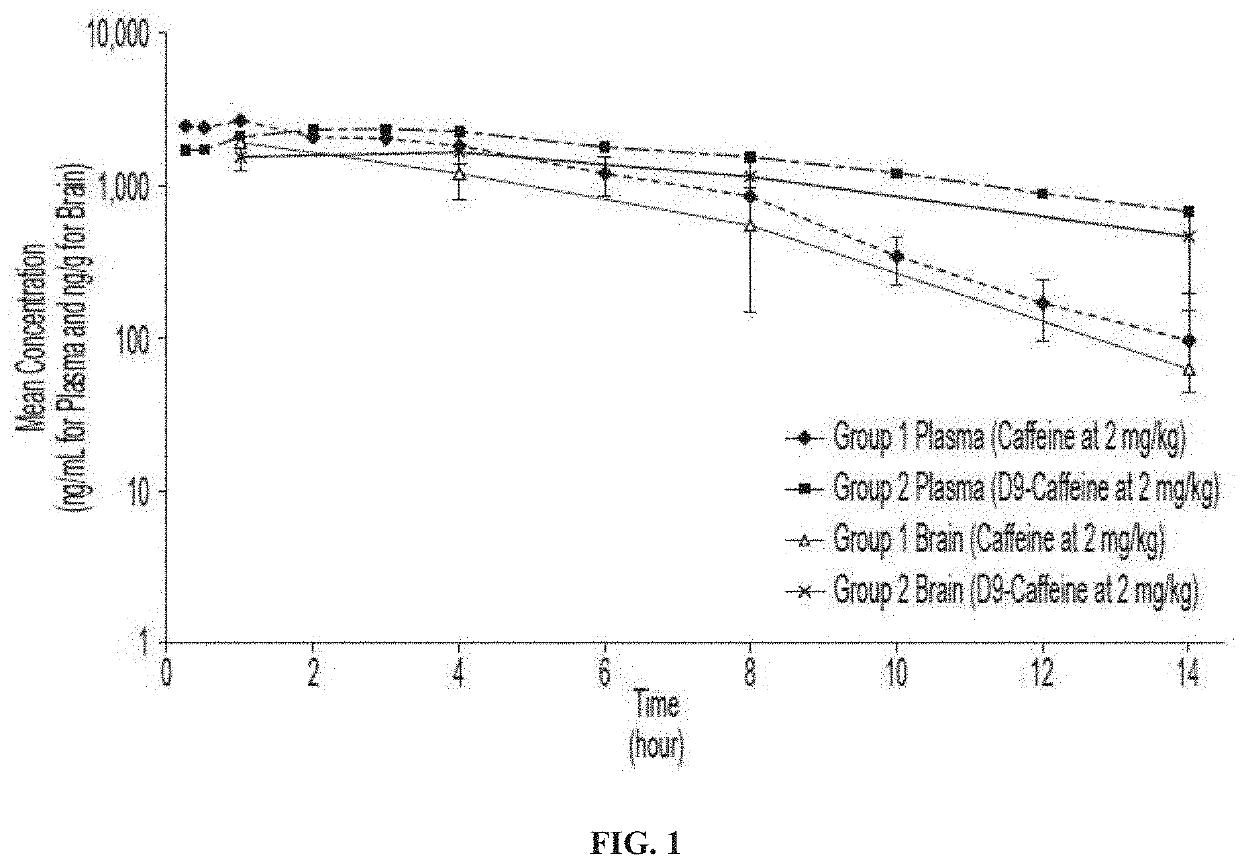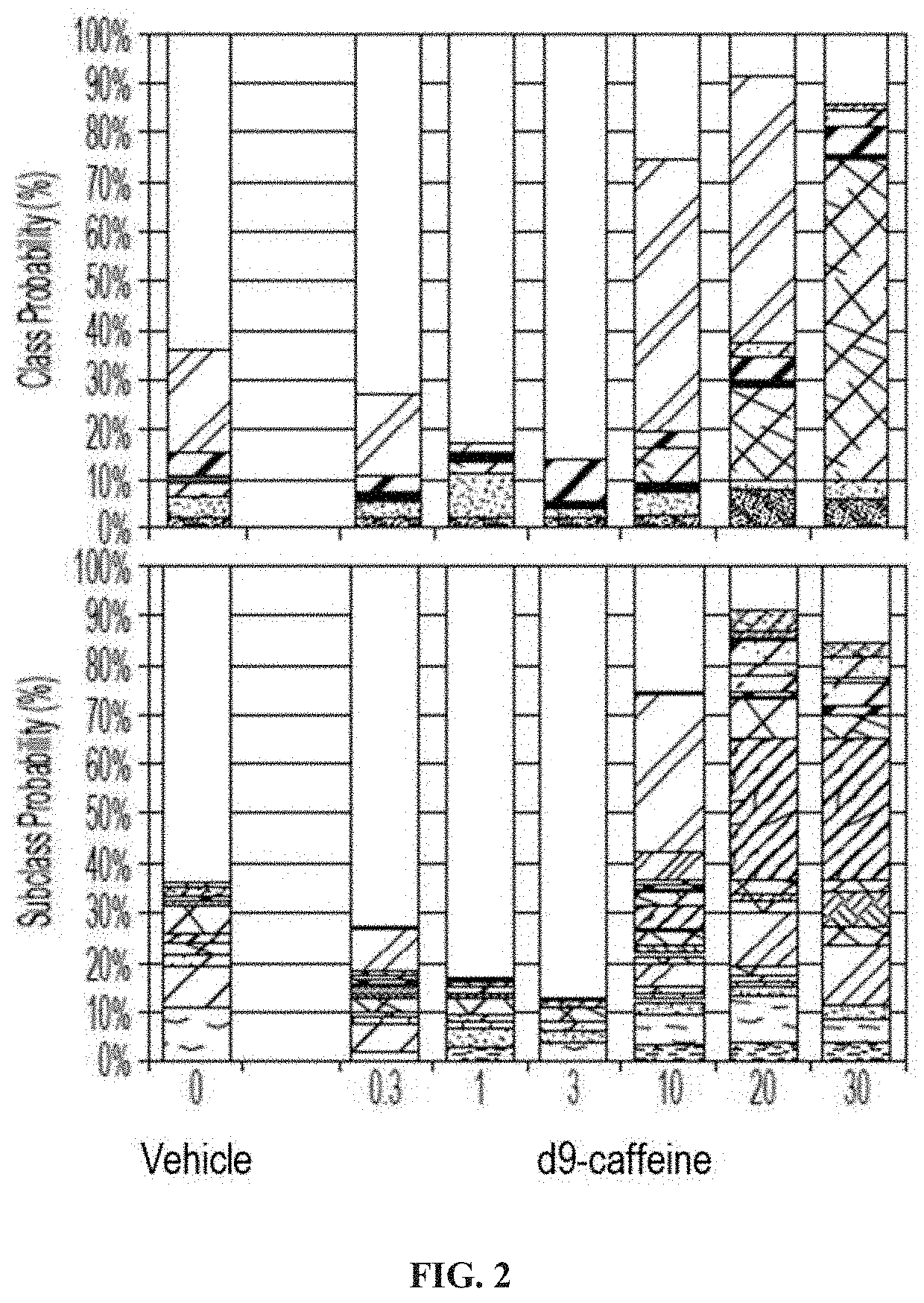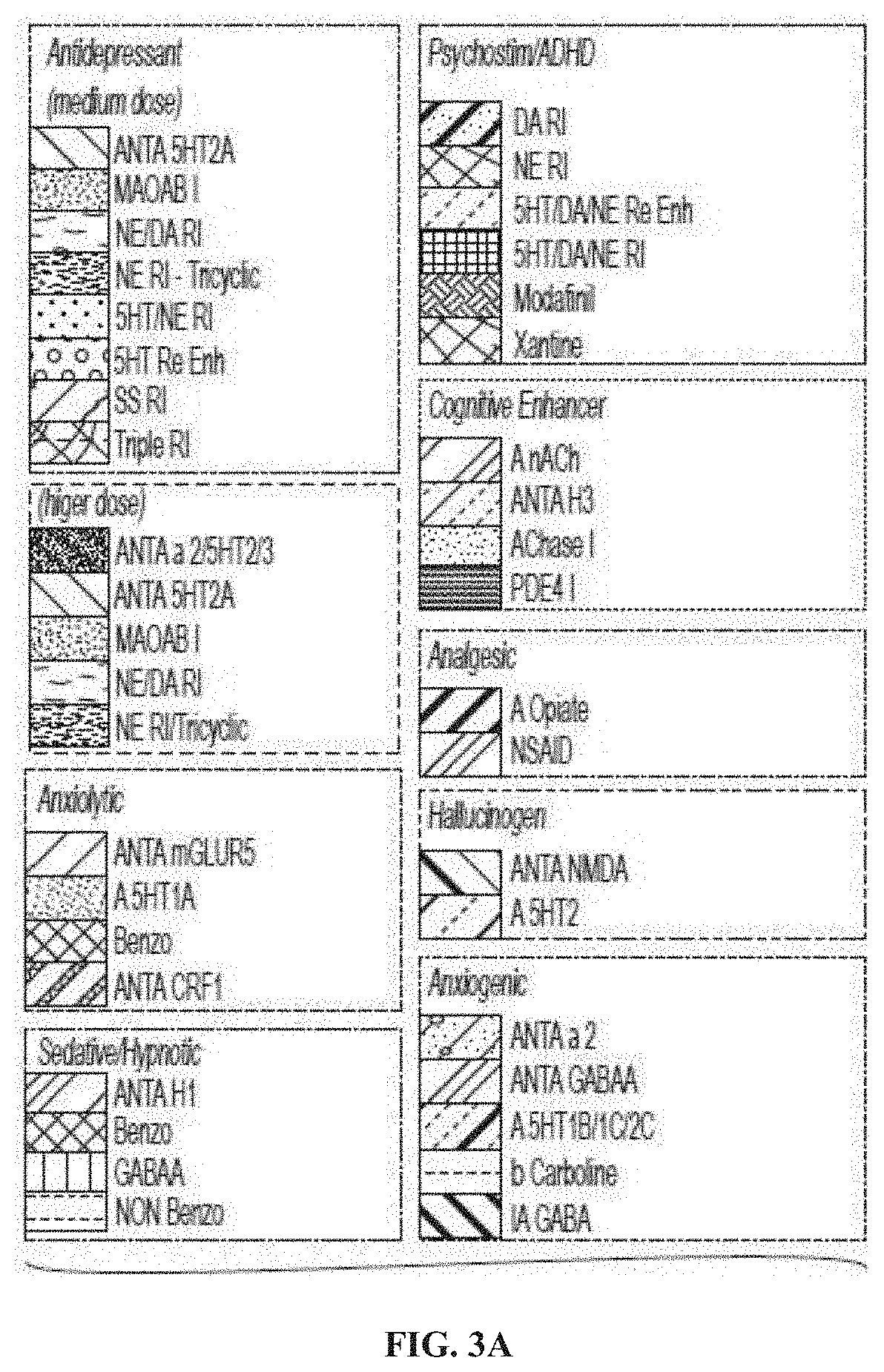D9-caffeine compositions and uses thereof
a technology of d9 and caffeine, applied in the field of d9caffeine, can solve the problems of limiting its use, heart palpitations, and suffering from caffein
- Summary
- Abstract
- Description
- Claims
- Application Information
AI Technical Summary
Benefits of technology
Problems solved by technology
Method used
Image
Examples
example 1
Pharmacokinetic (PK) Study Design
[0247]Two groups of fasted male Sprague-Dawley rats (12 animals per group) were administered an oral single dose of caffeine in deionized water (Group 1) or d9-caffeine in deionized water (Group 2) at a target dose level of 2 mg / kg.
[0248]Serial blood samples were collected from three animals per group per timepoint prior to dosing and at 0.25, 0.5, 1, 2, 3 4, 6, 8, 10, 12, and 14-hours post dose. No more than three blood samples were collected from individual animals with the last sample being a terminal blood draw. Terminal brain samples were collected from three animals per group at 1, 4, 8, and 14-hours post dose. Blood samples were collected into tubes containing sodium heparin, and then processed for plasma and stored frozen until bioanalysis. Brain samples were collected following the terminal blood collection, rinsed with saline, and stored frozen until bioanalysis.
[0249]Plasma and brain samples were analyzed for caffeine and d9-caffeine conce...
example 2
[0279]The following study evaluated the CNS-like activity of d9-caffeine in naïve C57 / Bl6 mice using acute oral administration followed by the SmartCube® test.
Experiment Design
[0280]Male C57 / Bl6 mice from Taconic Laboratories (Germantown, N.Y.) were used. Upon receipt, mice were group-housed in OPTI mouse ventilated cages with 4 mice per cage. Mice were acclimated to the colony room for at least one week prior to test, and subsequently tested at approximately 8 weeks of age. All animals were examined, handled, and weighed prior to initiation of the study to assure adequate health and suitability and to minimize nonspecific stress associated with manipulation. During the course of the study, 12 / 12 light / dark cycles were maintained. The room temperature was 20-23° C. with a relative humidity maintained between 30-70%. Chow and water were provided ad libitum for the duration of the study.
[0281]d9-Caffeine was tested at 0.3, 1, 3, 10, 20 and 30 mg / kg. The compound was formulated in deio...
example 3
[0286]The following study evaluated metabolic stability and metabolite formation for caffeine and d9-caffeine in human hepatocytes.
[0287]Cryopreserved human hepatocytes were thawed and suspended into 50 ml of InVitro GRO HT-medium. The cells were centrifuged (50 g, 5 min) and resuspended into InVitro GRO KHB-medium (protein free). The cell density and viability were determined by trypan blue exclusion method. Stock solutions of study compounds (caffeine, d9-caffeine, theophylline, theobromine, paraxanthine, d6-theophylline, and d6-theobromine) were prepared in DMSO, and were diluted to incubation medium before spiking to incubation.
[0288]Instrumentation: Waters Acquity UPLC+Waters TQ-S triple quadrupole MS; Column: Phenomenex Kinetex Biphenyl (2.1×100 mm, 1.8 μm) column with guard filter; Software: MassLynx 4.2.
[0289]The samples were analysed at 0, 30, 60, 90, and 120 minutes (with and without hepatocytes) by LC / MS / MS to monitor substrate depletion and formation of metabolites theop...
PUM
| Property | Measurement | Unit |
|---|---|---|
| concentration | aaaaa | aaaaa |
| concentration | aaaaa | aaaaa |
| concentration | aaaaa | aaaaa |
Abstract
Description
Claims
Application Information
 Login to View More
Login to View More - R&D
- Intellectual Property
- Life Sciences
- Materials
- Tech Scout
- Unparalleled Data Quality
- Higher Quality Content
- 60% Fewer Hallucinations
Browse by: Latest US Patents, China's latest patents, Technical Efficacy Thesaurus, Application Domain, Technology Topic, Popular Technical Reports.
© 2025 PatSnap. All rights reserved.Legal|Privacy policy|Modern Slavery Act Transparency Statement|Sitemap|About US| Contact US: help@patsnap.com



